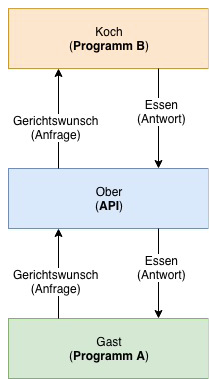
We’re here to explain the basics of what API’s are.
You’ve surely heard of this term if you use any kind of E-Commerce tool. The reason it is so widely known and so popular is because it is crucial for the commissioning of developing your own programs for your online business.
Below we explain the most important basics for understanding web APIs of all kinds.
What does API stand for?
Application Programming Interface. An API is the link between two different programs.
What does an API do?
The job of an API is to provide what we’d like to call ‘program A’ with data/information from their counterpart that we’ve dubbed ‘program B’. For example, you’re in the situation of wanting to make the products on your webshop available to an online marketplace. How you would need to do this is bring in the API on the marketplace you’d like to be available on.
How exactly does an API work?
In principle, ‘program A’ would send a request to the second ‘program B’ via its API. Program B then performs an action and usually reports back to program A with the result.
An example that we think might work well for you to understand is the below graph:
Picture this. You have a guest sitting in a restaurant. This guest orders a dish of his choice from a waiter. The waiter takes the guest's request to the kitchen where a chef prepares the food. Once the chef has finished, the waiter takes the dish and hands it over to the guest.

The above example is a real life scenario of what you have probably experienced many times over, so we hope this makes sense.
Now let’s put it in perspective technically.
The guest would be ‘program A’ who makes a request to the waiter (API) – i.e. the communication interface of the restaurant. The waiter brings the request to the cook, the cook represents the second ‘program B’. The chef (program B) processes the request and sends the dish (result/response) back to the guest (program A) via the waiter (API).
So the thing going back and forth between two parties or in this case two programmes, is the API.
Important to note: The guest does not know who the chef is or how he works. Also, the guest does not know what dishes other customers are ordering. His only way of communicating with the chef is through the waiter. The waiter delivers and translates messages and dishes between the customer and the chef.
It is very much the same with conventional APIs in programming: The API usually serves as the only source of information between two programs. If a dish/request isn't on the menu, the API can't answer it either. Furthemore, it is important to remember that a program can never find out exactly how another program works via the API.
What is the advantage to this? Well, for a start, programs are written with different programming languages. Now, you’d automatically think that this would make it hard for them to ‘communicate’. Which would be the case, if it weren’t for APIs. Through API’s, programmes can easily communicate with each other. The technology or programming language used is really not of consequence here, the more important part is only that some form of communal API is agreed upon.
Real life examples of APIs
In this modern times it is a very common fact that almost every single web application works with APIs. Whenever two different information services have to exchange information with each other, that’s when APIs make their appearance.
Examples of this:
- Amazon has an API to list products with all their data on Amazon (multichannel tools)
- Ebay has an API to find products on the marketplace (Ranking Tools)
- DHL has an API to send parcel data and receive a parcel label (Logistics Tools)
- Google Maps has an API to retrieve map information (various navigation or restaurant apps)
- Yahoo has an API to provide weather data (e.g. weather or grill apps)
What is the cost of an API?
APIs are often available free of charge. This is due to providers wanting to achieve the point of their products being used more often and also easily. Most of the time, however, the APIs also have limitations in terms of the number of calls. Of course, there are also paid APIs. It really depends on the provider, so prices are dependent on their specifications.
Any more questions when it comes to The ABC’s of API’s?
It’s a fascinating topic and one that you may have questions about. If you would like to know more, why not pop us an email on hello@especial.digital or contact us here on our website.
Found this helpful? Share this post with your colleagues and friends

Daniel Kolb
Product Development @ EspecialCONTACT
Would you like to know more?
Let us help you!